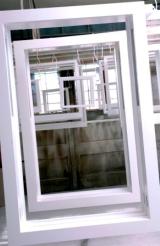Introduction to timber coatings
 Paints, coatings and varnishes play a vital role in helping to maximise the use of timber as a sustainable resource within the built environment. Coatings are typically designed to maximise service life and to minimise maintenance costs. Coatings can provide enhanced performance (e.g. intumescent paints for fire resistence) or decorative finishes.
Paints, coatings and varnishes play a vital role in helping to maximise the use of timber as a sustainable resource within the built environment. Coatings are typically designed to maximise service life and to minimise maintenance costs. Coatings can provide enhanced performance (e.g. intumescent paints for fire resistence) or decorative finishes.
Wood coatings have undergone considerable change in response to environmental and other legislation and require substantial testing to establish or predict service life across different wood species and climatic zones.
To integrity of a coating system is reliant not just on the chemical composition of the paint, but also:
1. the stability of the substrate,
2. moisture (how moisture passes through the coating, joints etc),
3. the maintenance process (the right frequency, materials etc.)
4. climate (temperature, atnosphere etc)
5. product design (e.g. to optimise drainage and minimise sharp edges)
6. thickness of the coating (BSEN 927 suite of standards – see below – are critical here)
7. Method of application (manual or automated, spray or brush).
BWF has a Coatings Group specifically established to focus on coatings issues – for more information email: kevin.underwood@bwf.org.uk
Standards and Regulatory Considerations:
EN 927: the new European standard for exterior wood coatings
Series/doc. No Digest Digest 466
A comprehensive set of European standards for exterior wood coatings. EN 927 comprises a guide to selection, a specification for assessing the performance of different types of wood coating systems in relation to end use and test methods for natural weathering and water absorption.
The relevant parts are:
BS EN 927-1:2013. Paints and varnishes. Coating materials and coating systems for exterior wood. Classification and selection
BS EN 927-2:2006. Paints and varnishes. Coating materials and coating systems for exterior wood. Performance specification
BS EN 927-3:2012. Paints and varnishes. Coating materials and coating systems for exterior wood. Natural weathering test
BS EN 927-5:2006. Paints and varnishes. Coating materials and coating systems for exterior wood. Assessment of the liquid water permeability
BS EN 927-6:2006. Paints and varnishes. Coating materials and coating systems for exterior wood. Exposure of wood coatings to artificial weathering using fluorescent UV lamps and water
Note: status withdrawn BS EN 927-4:2000 Paints and varnishes. Coating materials and coating systems for exterior wood. Assessment of the water-vapour permeability
If you are interested in purchasing a copy of one of the above standards, as a BWF Member you will be entitled to a discount – contact BWF for more information
Control of substances hazardous to health regulations
Useage of coatings is covered under The Control of Substances Hazardous to Health Regulations 2002 (as amended) apply to all employers and the self employed. The principles of COSHH are to prevent the exposure of workers to substances that are hazardous to health and therefore prevent ill health from occurring.
Solvent Emissions Directive (1999/13/EC)
This directive, known as the SED, necessitates industry users to have a permit and must comply with requirements to limit emissions of volatile organic compounds (VOCs) into the air.
Most SED installations are regulated by local authorities under the Local Authority Pollution Control (LAPC) regime. The process and sector guidance notes for solvent-using sectors incorporate the requirements of the SED.
Applying to solvent based products only, this directive, known as the SED, requires relevant industrial users to have a permit and to comply with requirements to limit emissions of volatile organic compounds (VOCs) into the air.
Defra’s Paint and Solvent Emissions pages provide further information.
The Volatile Organic Compounds in Paints, Varnishes and Vehicle Refinishing Products Regulations 2012
All products used should fall within the scope of this regulation, which sets maximum levels of organic solvents that can be contained in paints, varnishes and vehicle refinishing products (such as cleaners, primers and fillers). The new Regulations consolidate the 2005, 2009 and 2010 Regulations and revise Schedule 3, to implement changes to Annex III of the Paints Directive, updating ISO 11890-2 and adding the cheaper ISO 11890-1 (2007) test method to be used in certain circumstances. For further information you should contact your coatings supplier to ensure compliance.
Key BWF work items:
Servowood: A consortium of 15 partners (including the BWF) from the coatings and joinery industries and research institutes have been successful in receiving EU funding of €2.7m towards Servowood, a FP7 project whose goal is to develop and establish European standards that will facilitate the prediction of service life for exterior wood coatings. The total budgeted cost of the project is €3.8m. More on Servowood coatings project here
Further training resources on coatings and the care and maintenance of coated products
Timber windows in service: General advice on the procedures that are carried out during the manufacture of timber windows and the effect of poor protection or changes in climatic conditions can have on the windows in service.
The service life of timber windows: A landmark piece of research by the Wood Window Alliance looking at standards that allow demonstrable service life of 50 + years.
BWF Workshop: Right moisture content: right timber, coatings and processes (PDF)
BWF Innovation MasterClass – Coatings Innovation (PDF)
FAQ
Why does resin sometimes break through surface coatings and what can be done to treat it?
My Customer Wants A Natural Finish To Their Windows, But Should I Insist That They’re Painted?
What do I need to get examined and tested as part of my LEV testing?
Other Useful links
British Coatings Federation – The sole Trade Association representing the UK paint, printing ink, powder coatings and wallcoverings manufacturers.
TRADA – The Timber Research and Development Association
